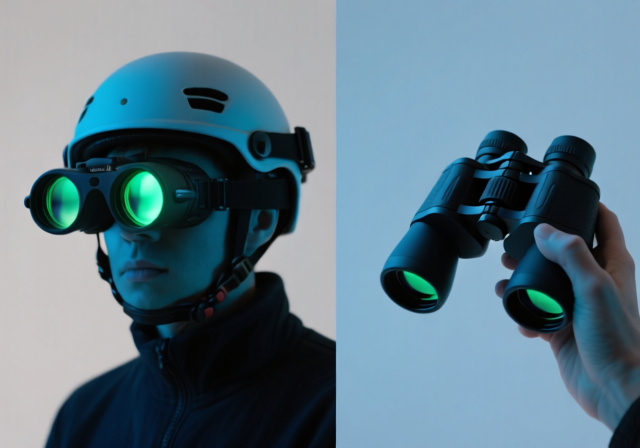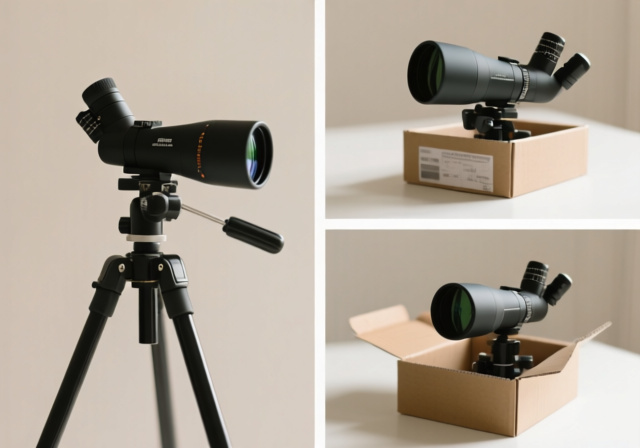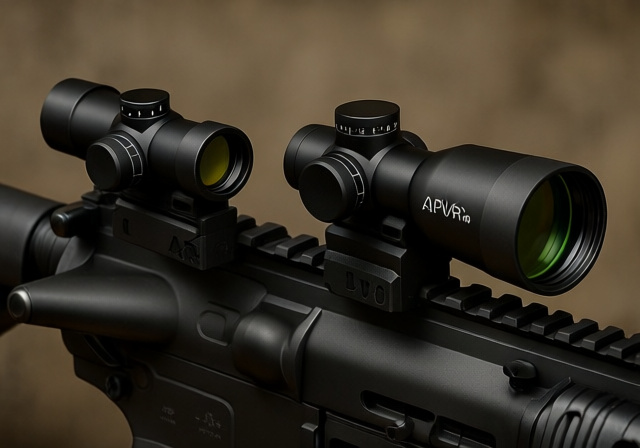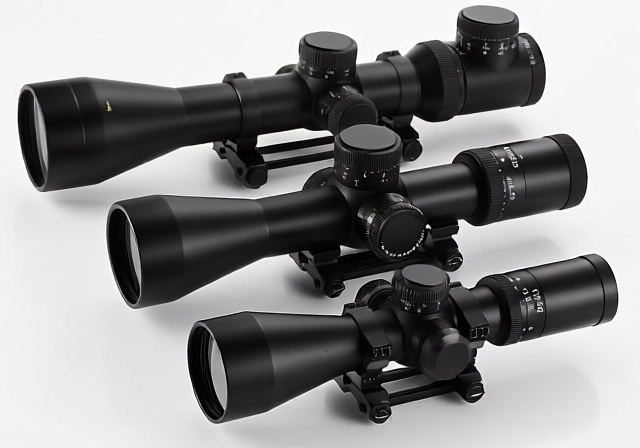

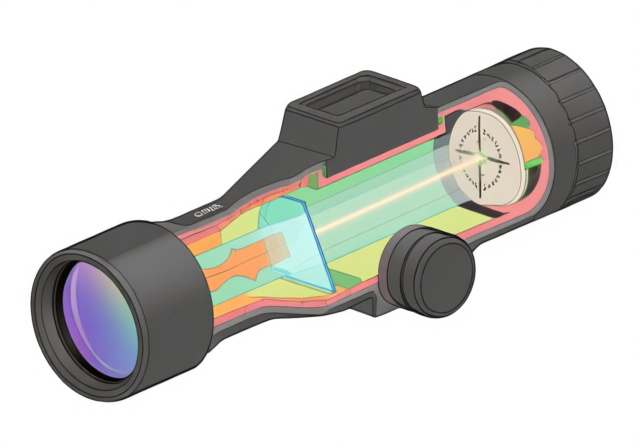

If you’ve been researching optics for your rifle, you’ve probably come across prism scopes as an alternative to traditional red dot sights and magnified scopes. I’ve spent years testing various optics systems, and prism scopes occupy a unique niche that many shooters overlook.
A prism scope is a type of firearm optic that uses a glass prism instead of traditional lenses to magnify targets and display an etched reticle, offering a compact, durable design with fixed magnification. This innovative optical system provides the best of both worlds: the simplicity of a red dot with the magnification of a traditional scope, all in a rugged package that works without batteries.
After working with dozens of shooters and testing prism scopes in various conditions, I’ve seen why these optics have gained such a loyal following. They’re particularly valuable for shooters with astigmatism who struggle with red dot blurry reticles, and for anyone needing a reliable optic that won’t fail when batteries die.
In this guide, I’ll break down exactly how prism scopes work, their advantages and limitations, and help you understand if they’re the right choice for your specific needs. We’ll cover everything from the optical path to real-world applications, drawing on insights from military users, competitive shooters, and everyday enthusiasts.
At its core, a prism scope is a telescopic sight that replaces the complex lens system of traditional scopes with a single glass prism. This fundamental difference in design creates an optic that’s more compact, durable, and reliable than conventional magnified optics.
The key innovation that sets prism scopes apart is the etched reticle. Unlike red dot sights that project a dot onto a lens, or traditional scopes that place the reticle on a separate focal plane, prism scopes physically etch the aiming point directly onto the prism glass. This means the reticle is always visible, even without illumination, making these optics truly battery-free when needed.
Prism System: A glass optical element that bends light through internal reflection, allowing the scope to maintain a compact size while providing magnification and keeping the image upright.
Most prism scopes feature fixed magnification, typically ranging from 1x to 5x. The 1x models compete directly with red dot sights, while higher magnifications like 3x and 5x bridge the gap between close-quarters optics and traditional scopes. This fixed magnification design eliminates the complexity of variable power systems, contributing to their legendary durability.
The construction quality of prism scopes reflects their military heritage. Premium models like the Trijicon ACOG have proven themselves in combat for decades, while more affordable options from brands like Primary Arms and Vortex bring similar technology to civilian shooters at a fraction of the cost.
Understanding how prism scopes work reveals why they’re so effective. The optical path is elegantly simple compared to traditional scopes, yet sophisticated in its execution.
This system’s beauty lies in its simplicity. With fewer moving parts than traditional scopes, there’s less that can go wrong. The prism system also allows for a more compact design – no need for the long erector tube that makes traditional scopes so lengthy.
The fixed parallax distance in most prism scopes (typically set at 100 yards) means you don’t have to worry about parallax adjustment for most shooting applications. This makes them faster to use in dynamic situations where you don’t have time to make fine adjustments.
After extensive testing and talking with hundreds of shooters, I’ve identified several key advantages that make prism scopes stand out in the crowded optics market.
Quick Summary: Prism scopes excel in durability, battery-free operation, and work exceptionally well for shooters with astigmatism. Their compact design and wide field of view make them versatile for various applications.
No optic is perfect, and prism scopes have their share of limitations. Being aware of these drawbacks will help you make an informed decision.
Fixed magnification is the most significant limitation. Unlike variable optics that can adjust from 1x to higher magnifications, prism scopes lock you into one magnification level. This means you need to choose your magnification carefully based on your primary use case. I’ve seen shooters buy a 5x prism scope only to realize it’s too much magnification for close-quarters work.
Eye relief is more restrictive than red dot sights. While not as tight as traditional scopes, prism scopes typically offer 2-4 inches of eye relief compared to the unlimited eye relief of red dots. This can make rapid target acquisition from various positions more challenging, especially with larger caliber rifles that have significant recoil.
Weight can be a concern on some models. While generally more compact than traditional scopes, prism scopes are often heavier than red dot sights. I’ve noticed this especially on lightweight hunting rifles where every ounce matters. Premium models like the ACOG are surprisingly light, but budget options can be porky.
Price point sits in the middle ground. While not as expensive as high-end variable optics, quality prism scopes typically cost more than basic red dots. However, when you consider the built-in magnification and battery-free operation, many shooters find the price justified.
Some users report limited eye box compared to red dots. You need to be more precise about eye position behind a prism scope, which can be challenging in awkward shooting positions or while wearing gear like helmets or ballistic glasses.
Understanding how prism scopes compare to other optics will help you choose the right system for your needs.
| Feature | Prism Scope | Red Dot Sight | Traditional Scope | LPVO |
|---|---|---|---|---|
| Magnification | Fixed (1x-5x) | None | Variable | Variable (1-8x) |
| Battery Required | No (optional illumination) | Yes | No | Yes (for reticle) |
| Astigmatism Friendly | Excellent | Poor | Excellent | Excellent |
| Eye Relief | 2-4 inches | Unlimited | 3-4 inches | 3-4 inches |
| Durability | Very High | Good | Moderate | Moderate |
| Weight | Moderate | Light | Heavy | Moderate-Heavy |
Prism scopes vs red dot sights: This is the most common comparison. Red dots excel in close-quarters speed with unlimited eye relief, but struggle with astigmatism and require batteries. 1x prism scopes offer similar performance with the advantage of a crisp reticle that doesn’t need power.
Prism scopes vs traditional scopes: Traditional scopes offer variable magnification but are bulkier and more fragile. Prism scopes provide fixed magnification in a more durable package. For applications where you know your typical engagement distance, a prism scope often makes more sense.
Prism scopes vs LPVOs (Low Power Variable Optics): LPVOs offer versatility with variable magnification but at the cost of complexity, weight, and often higher prices. Prism scopes trade versatility for simplicity and durability. If you primarily use one magnification setting on your LPVO, a prism scope might serve you better.
Based on my experience and feedback from the shooting community, certain applications particularly benefit from prism scope technology.
Tactical and home defense: 1x prism scopes excel here. They’re fast like red dots but work without batteries – crucial when you might not have time to check battery life. The etched reticle ensures you can aim accurately even if the illumination fails.
Hunting: For hunters who know their typical shot distances, prism scopes offer excellent performance in a compact package. They’re particularly good for dangerous game hunting where reliability is paramount and shots often occur at known ranges.
Competitive shooting: Many 3-gun and action pistol shooters prefer prism scopes for stages with intermediate targets. The fixed magnification helps with accuracy, while the durable construction stands up to the rigors of competition.
Recreational shooting: For plinkers and weekend warriors who want magnification without the complexity of traditional scopes, prism scopes offer an excellent balance of performance and simplicity.
Shooters with astigmatism: This is where prism scopes truly shine. If you’ve struggled to see a clear dot with red dot sights, a prism scope will be a revelation. The etched reticle provides a sharp aiming point regardless of vision issues.
Prism scopes excel in tactical applications, hunting, and for shooters with astigmatism. They’re particularly valuable when battery-free operation is important, or when you need magnification in a compact, durable package. Many competitive shooters also prefer them for stages requiring intermediate range accuracy.
The main difference is the optical system. Prism scopes use a glass prism to bend light and magnify the image, while regular scopes use multiple lenses in an erector tube. This makes prism scopes more compact and durable, but typically with fixed magnification. Prism scopes also have etched reticles that work without batteries.
The main limitations include fixed magnification (can’t adjust like variable scopes), limited eye relief compared to red dots, potentially heavier weight, and higher cost than basic red dots. They also have a more restricted eye box, requiring more precise eye positioning.
Red dot sights project an illuminated dot onto a lens and require batteries, while prism scopes use an etched reticle on a glass prism that’s visible without power. Prism scopes include magnification, whereas red dots are unmagnified. Prism scopes also work better for shooters with astigmatism who see red dots as blurry.
Yes, prism scopes are excellent for specific applications. They offer reliable performance, battery-free operation, and are particularly good for shooters with astigmatism. While not as versatile as variable optics, they provide a durable, compact solution for shooters who primarily use one magnification level.
Prism scopes are extremely durable, with military-proven models like the Trijicon ACOG surviving decades of combat use. Their single-piece construction and fewer internal components make them more resistant to impact and recoil than traditional scopes. Many users report their prism scopes surviving drops and abuse that would destroy other optics.
1x prism scopes are ideal for close-quarters and tactical use. 3x works well for general purpose and intermediate ranges (50-300 yards). 5x is better for dedicated medium-range applications. Choose based on your primary shooting distance and intended use – remember, magnification is fixed so you can’t adjust for different ranges.
Prism scopes occupy a unique position in the optics world, offering features that neither red dot sights nor traditional scopes can provide alone. Their combination of durability, battery-free operation, and astigmatism-friendly reticles makes them an excellent choice for many shooters.
After years of testing and countless hours on the range, I’ve found that prism scopes truly shine when you know your needs and select the appropriate magnification. They’re not the do-everything solution that variable optics claim to be, but for their intended applications, they often perform better than more complex alternatives.
Whether you’re a tactical operator who can’t afford battery failure, a hunter needing reliable magnification in a compact package, or a shooter with astigmatism who’s struggled with red dots, there’s likely a prism scope that will meet your needs perfectly.


